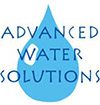Poor Water Quality Reports for 2017

With so many advancements out there to help the with the quality of water that comes into our homes and businesses, it is staggering to see the 2017 Water Utility Residential Customer Satisfaction Study from J.D. Power. The report indicates that nearly one third (32%) of residential customers reported having some type of water quality problem in 2017.
Among the specific problems reported were issues such as low pressure, bad taste, discoloration, and scaling/water hardness. These were the factors that had the most significant negative effects on the overall customer satisfaction. The study also covered overall satisfaction with water companies, including issues such as lack of communication and billing.
What do these results mean? This shows that there is a need for some major investment into the water infrastructure nationwide. Listening to the customers on both the negative and positive sides of water quality will be key in the ability for water utility companies to achieve the support to make the improvements that are needed to improve water quality across the nation.
Key Findings in the Study
This study went on to measure the satisfaction among residential customers of 87 water utilities that each delivered water to a population of at least 400,000 people and reported in four geographic areas. These areas were the Midwest, Northeast, South, and West. The overall satisfaction was measured by six factors and listed in order of importance. These factors were: delivery, price, conservation, billing and payment, communications, and customer service.
Delivery of bad tasting and hard water. Customers who experienced water quality problems had a lower delivery satisfaction score than those who experienced no problems. Bad taste and scaling or hardness of the water were associated with a significant decline in delivery satisfaction scores.
Awareness of conservation. The awareness of environmental initiatives from the water company increases their customer satisfaction score. When utility companies are open about their pro-conservation efforts, their scores jumped way up.
Open Communication. The ability for the company to put news out there helps build a relationship with the customer. Water utilities that communicate with their customers on everything from a boil order to a change in service will build a better relationship with their customers over time.
Direct, Frequent Communication. More frequent communication maximizes that relationship with the customer. This comes from having direct communication with the utility company rather than through hearsay from others or the news.
E-bill satisfaction. The rate of customer satisfaction is higher with e-bill customers than with paper bill customers. This may be due to the fact that those who get e-bills receive information faster and can get in contact with someone from the utility company more quickly than those who wait for the paper bill to come in the mail.
What this study shows overall is that communication is key. If customers report the issues they have and know they are working with a utility company that wants what’s best for its customers, those scores can surely get better next year. It’s important for these companies to listen to their customers and take the steps needed to help ensure that the cleanest, safest, and highest water quality is getting to its customers in the best way possible.
If you are concerned about the quality of your water and live in Ventura or Santa Barbara County, sign up for free water testing for your home or business today with Advanced Water Solutions!
